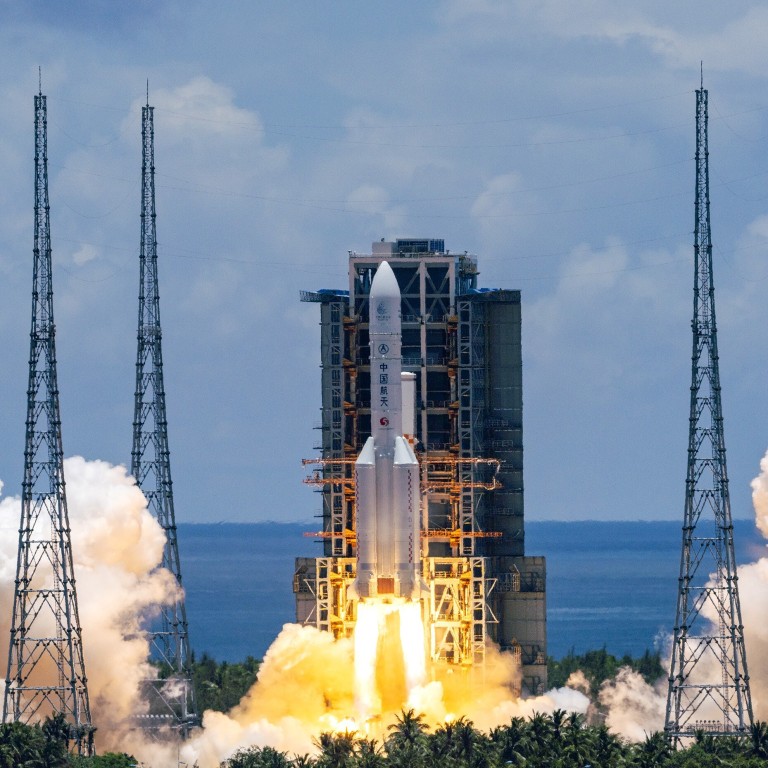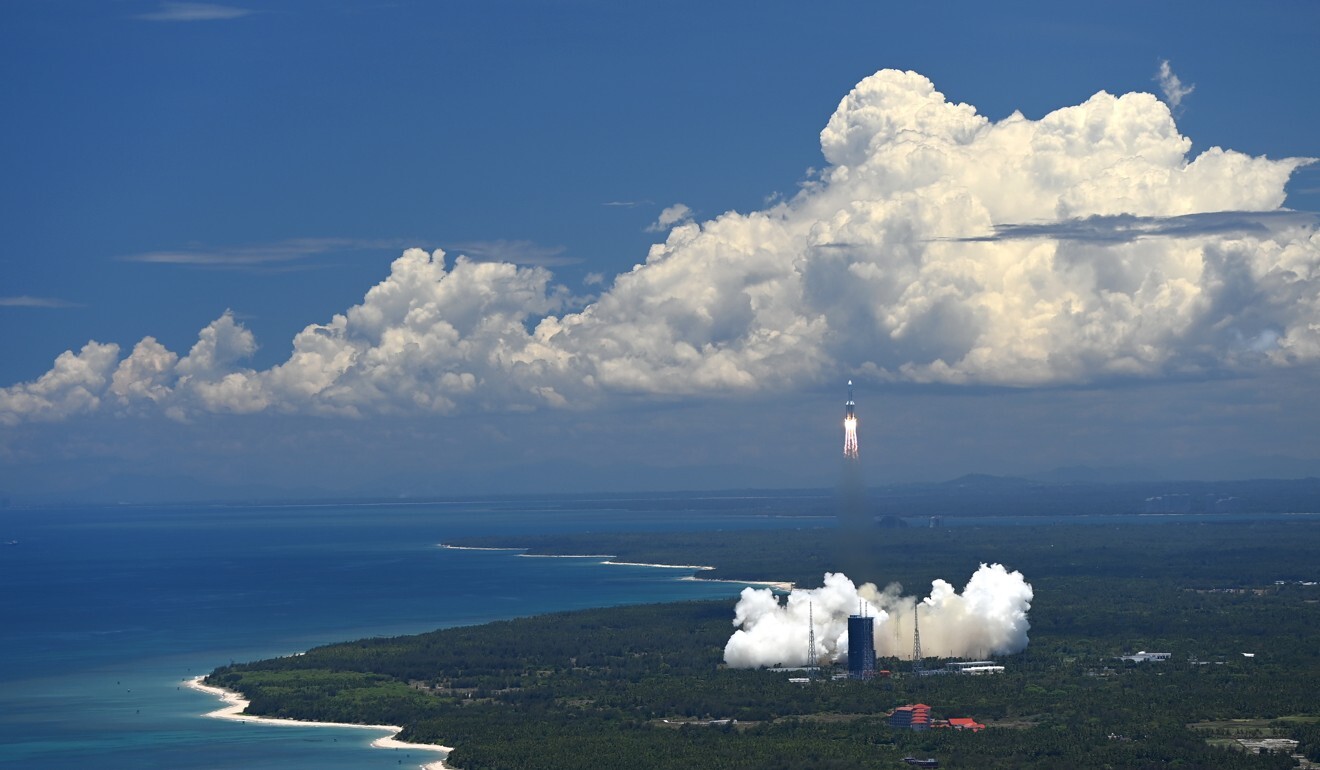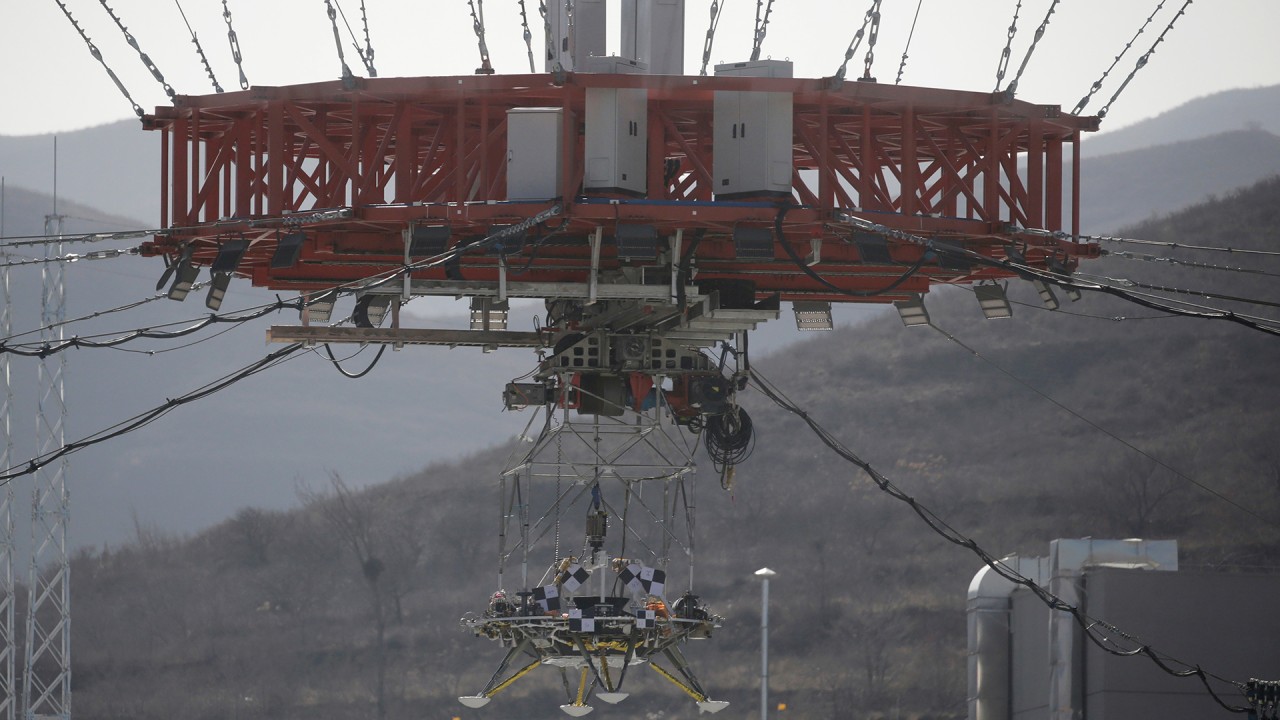
China launches its first independent mission to Mars
- If successful, the Tianwen-1 is expected to explore the red planet for over three months
- Nine years ago, the country launched a probe in collaboration with Russia that got stranded in orbit
China launched its first independent probe headed to Mars at 12.41pm on Thursday, a major milestone in Beijing’s mission to build a world-class space programme.
The 5-tonne probe was successfully sent into a predetermined orbit and started its Mars exploration mission after the carrier rocket flew for more than 36 minutes, according to state news agency Xinhua.

01:48
China launches mission to Mars with lift-off of home-grown Tianwen-1 spacecraft
China’s Mars probe consists of an orbiter, a lander and a rover. The lander and rover will make a soft landing on the surface, and afterwards, the rover is expected to study the planet’s surface, atmosphere, ionosphere and magnetic field.
The name Tianwen means “Questions to Heaven” in Mandarin, and was inspired by an ancient poem written by Qu Yuan in which Qu, who was born in 340BC, asked 172 questions about Chinese mythology, religious beliefs and history.
Official newspaper People’s Daily said on Weibo that the Tianwen project reflected the determination and perseverance of Chinese people to go further into space.
But a spokesman for the mission noted there were uncertainties ahead, despite the successful launch.
“If the probe can’t be captured by Mars’ [gravitational field] on the first trial, the orbit of the mission will have to be adjusted,” said the spokesman, Liu Tongjie. “It is critical and of great difficulty – it has to be done in one go.”
He added: “The entry, descent and landing process for a soft landing on Mars is full of uncertainties. The probe will have to identify the terrain and obstacles, and land on its own.”
The rover would also have to change its work mode if there was a dust storm to prevent its solar panels from getting covered in dust, which could stop it from recharging, he said.

The spacecraft has a 390g Mars landing surveillance camera on board, developed by Hong Kong Polytechnic University. Yung Kai-leung, chair professor of precision engineering who led the team that developed it, said the device could capture ultra-wide angle images for scientific research with low distortion optics. It can also withstand the extreme temperature differences of about 150 degrees Celsius that will be experienced during the trip to Mars and when it is used on the red planet, which has an average temperature of -62.8 degrees Celsius. The university said it could also endure an impact of 6,200 times the force of the Earth’s gravity.
This is the most scientifically comprehensive mission to investigate the Martian morphology, geology, mineralogy, space environment and soil and water-ice distribution, according to the Chinese scientists involved in the mission.
“Tianwen-1 is going to orbit, land and release a rover all on the very first try, and coordinate observations with an orbiter,” the team of mission scientists wrote in the journal Nature Astronomy on July 13. “No planetary missions have ever been implemented in this way. If successful, it would signify a major technical breakthrough.”

01:28
China completes lander test for 2020 Mars mission
It is the second time China has been involved in sending a probe to Mars.
Mars is the fourth planet from the Sun and the second-smallest planet in the solar system, only larger than Mercury. It is the nearest planet to Earth. This proximity has long captured the imagination of humans hoping to develop a liveable habitat in the future, despite the vision being nearly impossible with current technology.

Human exploration of Mars has been going on for decades. The Soviet Union was the first country to attempt a Mars mission when it launched a spacecraft in October 1960 that was destroyed during launch.
In May 1971, the Mars 2 orbiter became the first man-made object to reach Mars, although the landing system failed and the lander was lost. More than a week later, the USSR sent a lander to Mars, which became the first successful landing on the planet, although the lander only worked for 14.5 seconds.
The US had its first successful fly-by of Mars in November 1964, and the Viking missions of the 1970s were the first sustained mission on the planet. Launched in 2001, Nasa’s Mars Odyssey holds the record for the longest time spent orbiting a planet that is not Earth.
Chief scientist of the Chinese mission Weixing Wan, 62, died from illnesses on May 20 in Beijing, Xinhua reported. His given name means “satellite” in Chinese.


